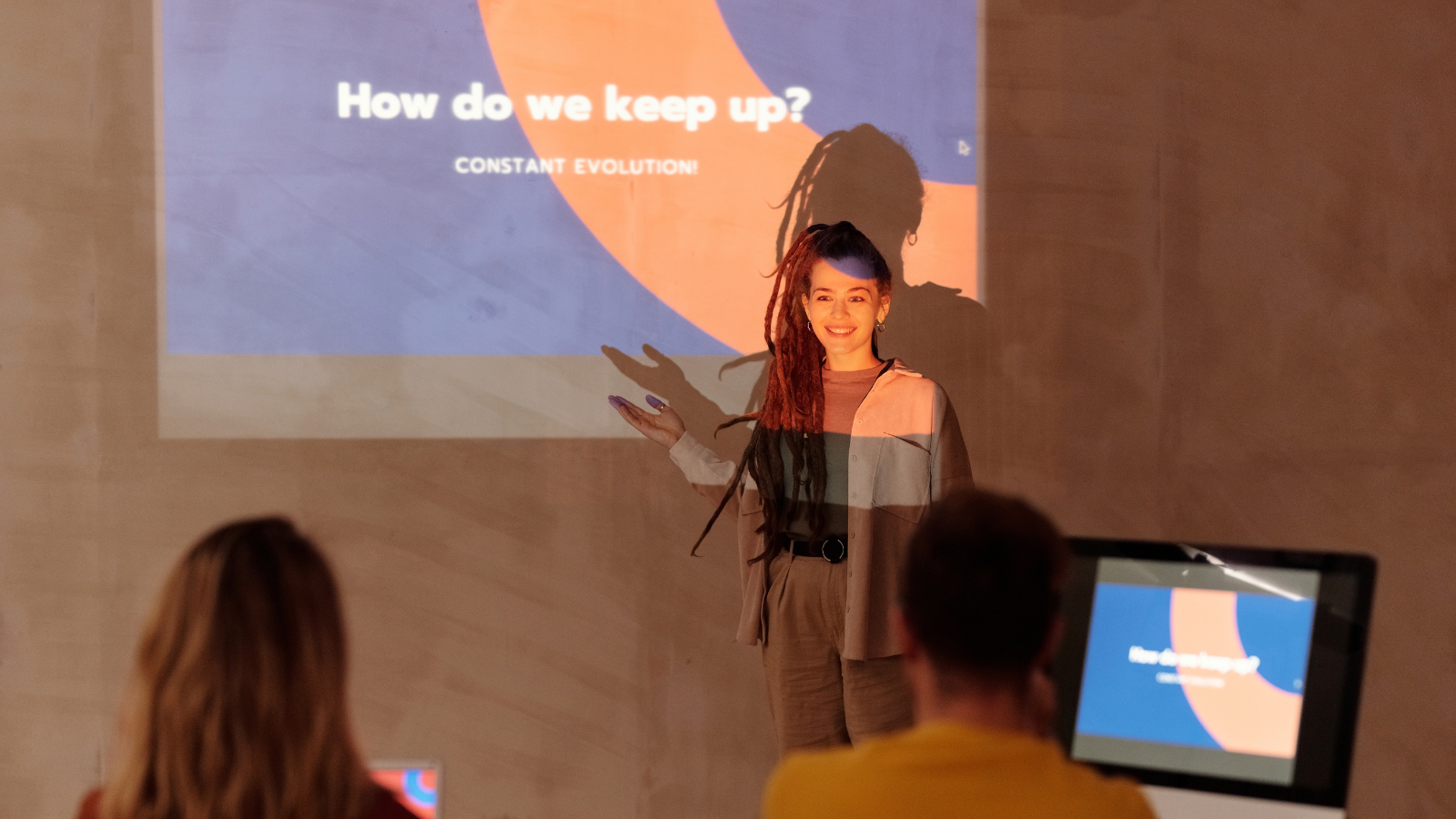Nurturing LinkedIn Leads to Loyalty
As we step into 2024, the pulsating world of B2B social space has crowned LinkedIn as its digital monarch. This platform has undergone a transformative evolution, transcending its original role as a digital Rolodex or a mere congregation for job seekers and decision-makers. Now, LinkedIn emerges as a formidable B2B powerhouse, ripe for nurturing LinkedIn leads - critical for any B2B lead generation effort.
It's a goldmine for those adept at cultivating LinkedIn connections, turning them into opportunities for LinkedIn conversions and, eventually, customer loyalty on LinkedIn.
But with this evolution comes a nuanced challenge: mastering the art of genuine connection in a realm teeming with transient digital interactions. This guide provides an insightful, deep dive into the strategies that not only build but also nurture meaningful relationships on LinkedIn.
These are the interactions that lay the groundwork for loyalty, catapulting your trajectory of growth and ensuring sustained engagement in today's fiercely competitive marketplace.
Mastering LinkedIn Lead Nurturing for Enhanced Loyalty in 2024
The Evolution of LinkedIn in the B2B Realm!
LinkedIn's origins are as humble as they are inspiring, having sprung to life in the living room of co-founder Reid Hoffman in 2002. Officially launched on May 5, 2003, it has since burgeoned into the premier professional network. Today, under the astute leadership of Ryan Roslansky, LinkedIn boasts a diversified business model, drawing revenue from membership subscriptions, targeted advertising sales, and recruitment solutions that cater to the needs of a dynamic job market.
In December 2016, a significant milestone was reached when Microsoft completed its acquisition of LinkedIn. This alliance fused the world's leading professional cloud with the world's leading professional network, setting a precedent for technology-driven career development and professional networking.
With a robust membership of 950 million individuals across over 200 countries and territories, LinkedIn's commitment to creating economic opportunity for every member of the global workforce is unwavering.
Each feature and service is designed to foster career advancement and enrich professional relationships, making it an indispensable ally in the B2B realm. This focus on cultivating a global community of professionals underpins the importance of lead nurturing within the LinkedIn ecosystem, where every connection has the potential to flourish into a fruitful, long-standing professional relationship.
Why Lead Nurturing Matters More than Ever?

The shift from cold outreach to genuine relationship-building is not just a fleeting trend, but an essential strategy. Lead nurturing is the process that ensures this transition, guiding potential leads through the sales funnel with a personal touch and a keen understanding of their needs. Here's why it's more critical than ever:
a) Enhanced Engagement: With an overwhelming amount of digital noise, personalized engagement stands out. The Online Marketing Institute shared that companies that nurture their leads experience a 45% increase in lead generation return on investment.
b) Higher Conversion Rates: Companies that excel at lead nurturing generate 50% more sales-ready leads at a 33% lower cost, according to Forrester Research. These statistics underscore the efficiency of a well-crafted lead nurturing strategy.
c) Improved Customer Retention: It's about five times more expensive to attract a new customer than to retain an existing one. Nurtured customers feel valued and understood, increasing their loyalty and lifetime value.
d) Increased Deal Size: Nurtured leads tend to make larger purchases. A study posted through Data Box found that nurtured leads have a 47% higher AOV (average order value) compared to non-nurtured leads.
e) Referrals and Network Expansion: A nurtured lead is more likely to become an advocate for your brand, extending your reach within the B2B social space through organic referrals.
f) Educated Customers: Lead nurturing often involves sharing valuable content that educates prospects. An informed customer is likely to be a more engaged and committed one.
g) Feedback Loop: Through continuous engagement, companies receive direct feedback, which can be invaluable in refining products, services, and strategies.
The bottom line is clear: in the quest for LinkedIn conversions and fostering customer loyalty on LinkedIn, the human element reigns supreme. The return on investment (ROI) from genuine connection and consistent engagement with your prospects can be the defining factor in your company's success within the B2B lead generation sphere.
Tactics for Effective Lead Nurturing!

Effectively nurturing leads, especially in the B2B social space, is akin to cultivating a garden; it requires patience, personalization, and a strategic approach to yield fruitful results. Let’s explore tactics that can help you personalize your outreach, create resonating content, and engage through interactive platforms like webinars.
a) Tailored Outreach
Tailored outreach is the cornerstone of effective lead nurturing on LinkedIn. It's all about understanding the unique needs, pain points, and goals of your connections and crafting messages that speak directly to their situation. This involves taking the time to research your connections, review their profiles, and engage with their content to gain insights into their interests and challenges.
You can later use this insight to craft messages that speak directly to their situation. For instance, if you notice that a connection regularly engages with content about innovation, send them a personalized invite to a webinar on cutting-edge industry trends.
b) Best Practices for Tailored Outreach on LinkedIn
a) Personalize Your Messages: Always use your connections' names and avoid generic greetings.
b) Reference Specific Content They've Engaged With: This is the perfect moment to show that you've taken the time to understand their interests.
c) Offer Solutions to Their Pain Points: Directly demonstrate how your product or service can address their specific challenges.
d) Keep Your Messages Concise and to the Point: As simple as it sounds, people are busy, so get to the point quickly.
By taking the time to personalize your outreach, you'll make a stronger connection with your leads and increase your chances of converting them into customers.
c) Content that Educates and Adds Value
In the sea of content, what stands out is material that not only informs but also offers actionable insights. This means providing practical tips, strategies, and resources that your connections can use to solve their problems and improve their businesses.
You can use and even leverage LinkedIn’s publishing platform to share articles that tackle common challenges in your industry. Invest in the tools and resources you need, whether it's editing software or a fancy logo maker, that will help you create content that delights and connects on a deeper level. This will ultimately position you as a thought leader and a helpful resource, rather than just another sales pitch.
d) Best Practices for Creating Educational Content That Adds Value
a) Use Data and Case Studies to Back Up Your Posts: Making your content more credible and persuasive is absolutely essential for building trust, and position you as a credible thought leader.
b) Use Visuals To Break Up Your Text: Make your content more engaging by using infographics, charts, and images can help you convey complex information more effectively.
c) Use Different Content Formats: Take advantage of LinkedIn’s posting options to mix up your content formats. Everyone consumes content differently, so make sure to create a variety of posts that include text-based updates, articles, videos, and presentations to keep your content fresh and appeal to different learning preferences.
e) Engaging Webinars and Q&A Sessions
Webinars and Q&A sessions are powerful tools for lead nurturing on LinkedIn. They allow you to demonstrate your expertise, share valuable insights, collect reviews, and interact with your audience in real time.
These sessions not only serve as a knowledge-sharing platform but can also help you understand your audience better, which is crucial for effective lead nurturing.
f) Best Practices for Hosting Engaging Webinars and Q&A Sessions

a) Choose a Relevant Topic: Select a topic that your target audience is interested in and that aligns with your expertise.
b) Promote Your Webinar in Advance: Use LinkedIn's event feature and share it on your profile and groups.
c) Make Your Webinar Interactive: Include polls, Q&A sessions, and live chat examples to keep your audience engaged. As an added tip, it’s always a good idea to have a colleague there for technical support, for you to focus solely on sharing what you know best, and making the most impact on your audience.
d) Follow Up With Your Attendees: Send a thank you email and share additional resources that provide extra value, and allow you to continue building rapport with your network.
g) Consistency is Key
Consistency is crucial for effective lead nurturing on LinkedIn. It's about staying top-of-mind with your connections through regular interactions, such as comments, messages, and updates. Keep in mind though, that this doesn't mean bombarding your connections with constant messaging; instead, it's about providing regular value and staying engaged with their content.
Best Practices for Maintaining Consistency
a) Create a Content Calendar: plan your LinkedIn posts and messages in advance to ensure consistency.
b) Leverage LinkedIn's scheduling tools: Automate your posts and messages to save time and ensure consistency.
c) Thoughtfully Engage With Your Connections: Like, comment, and share their content to stay visible.
d) Respond to Messages Promptly: Show that you value your connections' time by responding to their messages promptly.
By maintaining consistency, you'll keep your brand top-of-mind with your connections and increase your chances of nurturing them into loyal customers.
Feedback Loop through Polls and Surveys
Leveraging LinkedIn's poll feature is a great way to gather feedback and preferences from your audience. Similarly, you can use tools like Quiz Maker to create quizzes that engage users while providing actionable insights to enhance your lead nurturing strategies.
Best Practices for Using Polls To Gather Feedback!
a) Ask Clear and Concise Questions: Make sure your questions are easy to understand and answer.
b) Use a Variety of Question Types: Include multiple-choice, open-ended, and rating scale questions. This will allow you to gather more data and paint a much clearer picture of your connections’ needs, pain points, and overall insights.
c) Promote Your Polls on LinkedIn: Share your polls on your profile, groups, and communities.
d) Analyze the Results and Take Action: Now that you have data to work with, use it to inform and re-shape your content.
e) Segmentation for Precision: Segmentation is a critical component of effective lead nurturing on LinkedIn. By dividing your audience into smaller, more targeted segments, you can tailor your outreach efforts to address the specific needs and interests of each group.
This results in more relevant and engaging communication, which can significantly improve your conversion rates.
Best Practices to Segment a LinkedIn Audience!
a) Start with a Clear Understanding of Your Buyer Personas: Before you start segmenting your audience, it's important to have a clear understanding of your ideal customer profiles (ICPs) or buyer personas. This will help you identify the key characteristics that differentiate your best customers from the rest, and it will guide your segmentation criteria.
b) Use LinkedIn's Advanced Targeting Options: LinkedIn offers a variety of advanced targeting options that you can use to segment your audience based on demographics, company details, job title, skills, interests, and more. These options allow you to create highly targeted segments that reach the right people with the right message.
c) Leverage Your Existing Data: If you have any existing customer or prospect data, you can use this to segment your LinkedIn audience.
d) Use segmentation tools to automate the process: There are a number of segmentation tools available that can help you automate the process of segmenting your LinkedIn audience. These tools can save you time and effort, and they can help you ensure that your segments are accurate and up-to-date.
Remember, the core of nurturing is about building relationships over transactions. It’s not one-size-fits-all; it's about understanding the nuances of your prospects and providing them with solutions that make their professional lives easier. By incorporating these tactics, you can transform your LinkedIn strategies for 2024 into a robust nurturing process that converts connections into loyal customers.
Conclusion
LinkedIn emerges as a vital nexus in 2024, where depth trumps breadth in the realm of connections. The platform’s metamorphosis into a hub for cultivating LinkedIn connections has rendered the mere count of contacts obsolete. Today, the true measure of LinkedIn’s efficacy lies in the robustness of relationships and the conversion of connections into customer loyalty. With over 950 million members, the potential for LinkedIn conversions is immense, if navigated with precision.
Lead nurturing on LinkedIn has transcended traditional methods, integrating personalized strategies to resonate with the individual needs of each connection. This strategic shift underscores the platform’s role in not just generating B2B lead generation prospects but in fostering a loyal client base through consistent and meaningful engagement.
The capacity to turn leads into long-lasting partnerships is the standard by which B2B interactions on LinkedIn are measured in the competitive cadence of digital marketing. By utilizing the multitude of tactics and data available to us, companies may attract customers and build a devoted base of supporters. The genuineness and worth of every connection on LinkedIn will remain valuable as we go toward 2024 and beyond, reaffirming its position as a vital component of B2B success.
FAQs
Q: What strategies can enhance lead nurturing using LinkedIn’s native features?
A: LinkedIn's array of native tools can significantly bolster your lead nurturing efforts. For instance, LinkedIn analytics offer insights into content performance and lead behavior, allowing for more informed strategies. Polls and surveys can facilitate interactive engagement and capture direct feedback while publishing insightful articles and hosting live sessions can attract and retain audience interest. These tools collectively help in personalizing your approach to B2B lead generation and nurturing.
Q: Is a premium LinkedIn account a necessity for effective B2B lead nurturing?
A: While a premium account on LinkedIn provides additional tools and insights that can aid in sophisticated lead nurturing strategies, the essence of successful lead nurturing lies in the value and engagement you provide. Even without premium features, effective nurturing can be achieved through consistent, high-quality interactions and content that addresses the specific needs of your audience.
Q: What is the recommended frequency for engaging with potential leads on LinkedIn to maximize conversions?
A: The key to maximizing LinkedIn conversions through engagement is regularity coupled with relevance. It's critical to maintain a consistent presence that aligns with the interests and needs of your potential leads without bordering on intrusiveness. This balance ensures your efforts are constructive and welcome, thereby nurturing leads effectively without the risk of spamming them.
Q: Can content marketing on LinkedIn significantly impact lead nurturing in the B2B sector?
A: Absolutely. In the B2B realm, content marketing on LinkedIn has become a pivotal component of lead nurturing. High-quality, informative content that addresses the pain points and aspirations of your B2B audience establishes thought leadership and trust. By consistently delivering valuable insights, tips, and industry updates, you can engage your prospects on a deeper level, guiding them through the sales funnel toward loyalty and advocacy.
Q: How can businesses measure the success of their lead nurturing efforts on LinkedIn?
A: Measuring the success of LinkedIn lead nurturing can be accomplished by analyzing several key performance indicators (KPIs). Engagement rates, such as likes, comments, and shares, provide initial insights into content resonance. More profound metrics like message response rates, conversion rates from content or campaigns, and growth in meaningful connections offer a direct correlation to nurturing success. LinkedIn’s analytics can track these KPIs, enabling businesses to refine their approach and optimize their strategies for even better results.
By addressing these FAQs with strategic insights and actionable advice, your audience can gain a clear understanding of effective LinkedIn lead nurturing and how it can transform their B2B lead generation efforts into a source of sustainable customer loyalty.




